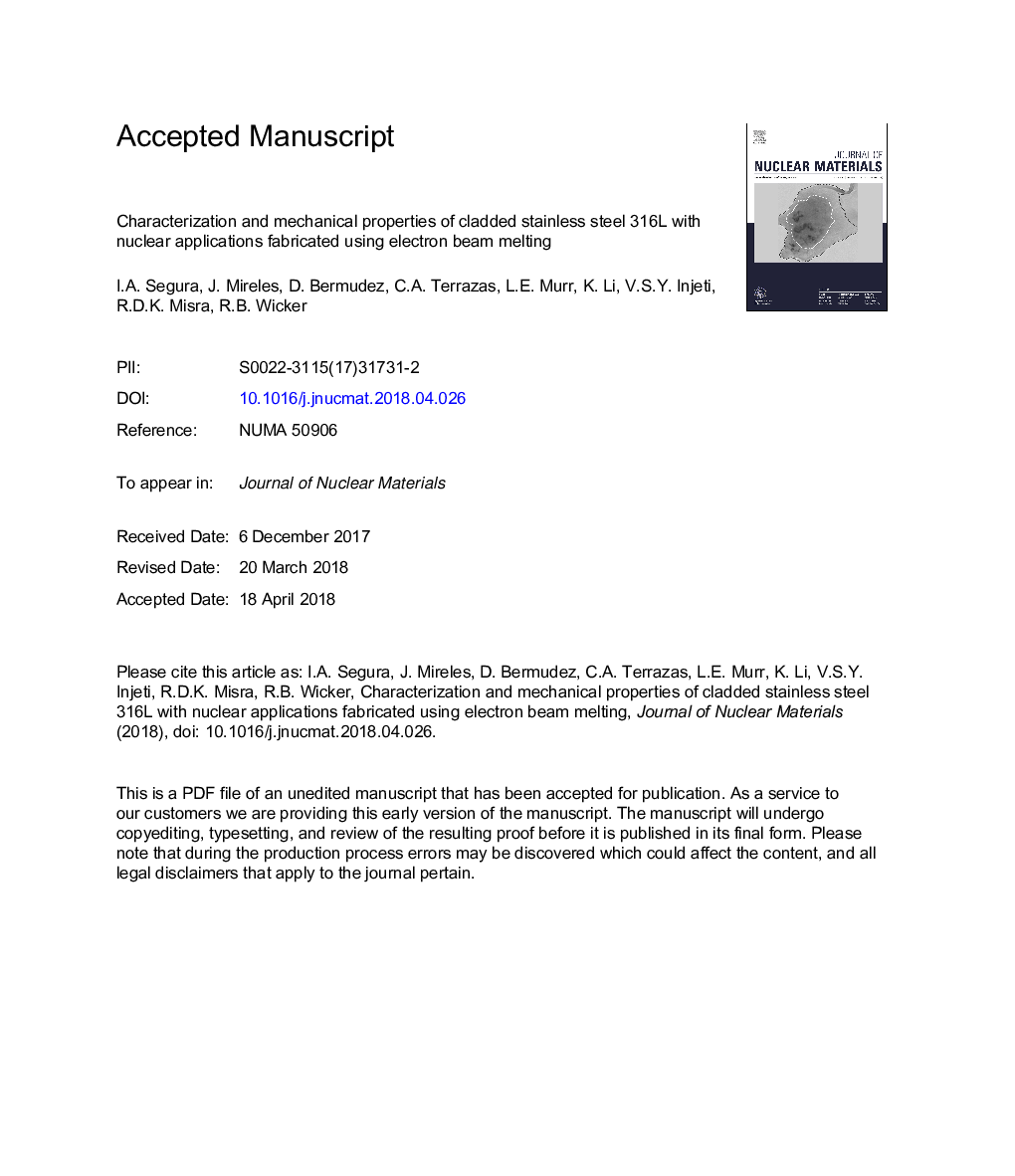| کد مقاله | کد نشریه | سال انتشار | مقاله انگلیسی | نسخه تمام متن |
|---|---|---|---|---|
| 7963089 | 1514139 | 2018 | 35 صفحه PDF | دانلود رایگان |
عنوان انگلیسی مقاله ISI
Characterization and mechanical properties of cladded stainless steel 316L with nuclear applications fabricated using electron beam melting
دانلود مقاله + سفارش ترجمه
دانلود مقاله ISI انگلیسی
رایگان برای ایرانیان
کلمات کلیدی
موضوعات مرتبط
مهندسی و علوم پایه
مهندسی انرژی
انرژی هسته ای و مهندسی
پیش نمایش صفحه اول مقاله

چکیده انگلیسی
The ability to fabricate or join components of 316â¯L austenitic stainless steel using additive manufacturing (AM) processes such as laser and electron beam melting (EBM®) offers several advantages including enhanced part complexity, narrow or absent heat affected zones, increased part precision, avoidance of filler materials (such as traditional welds), and the ability to create metallurgically sound bonds. These attributes can contribute to improved mechanical properties of the fabricated components and component repair in nuclear, aerospace, and chemical industries. In the present work, we report that austenitic 316â¯L stainless steel additively manufactured by EBM exhibits a 76% increase in the yield strength and a corresponding increase of 29% in the ultimate tensile strength in contrast to the wrought substrate and commercial forged 316â¯L stainless steel. The EBM clad 316â¯L stainless steel elongation was 36%. The wrought substrate equiaxed grain size was â¼30â¯Î¼m in contrast to elongated, columnar grains â¼0.1â¯mm wide and >1â¯mm in length for the EBM cladding. Transmission Electron Microscopy (TEM) analysis revealed that these columnar grains, which exhibited very straight, and presumably special grain boundaries having a very high (100) texture, contained a variety of sub-grain microstructures consisting of low-angle sub-grain boundaries containing dislocation tangles and stacking-fault arrays, and homogeneously distributed Cr23C6 carbide precipitates, with no preferential carbide precipitation on either the straight, special columnar grain boundaries, or the very low-angle sub-grain boundaries. This observation and the formation of hierarchical microstructures which produce high strength and possibly corrosion resistance as a consequence of the absence of grain boundary carbide precipitation, illustrate the prospects for AM as a novel concept for achieving grain boundary engineering to promote high-strength and corrosion resistant alloys for high-temperature, corrosive environments, including elevated temperature nuclear reactor applications.
ناشر
Database: Elsevier - ScienceDirect (ساینس دایرکت)
Journal: Journal of Nuclear Materials - Volume 507, 15 August 2018, Pages 164-176
Journal: Journal of Nuclear Materials - Volume 507, 15 August 2018, Pages 164-176
نویسندگان
I.A. Segura, J. Mireles, D. Bermudez, C.A. Terrazas, L.E. Murr, K. Li, V.S.Y. Injeti, R.D.K. Misra, R.B. Wicker,